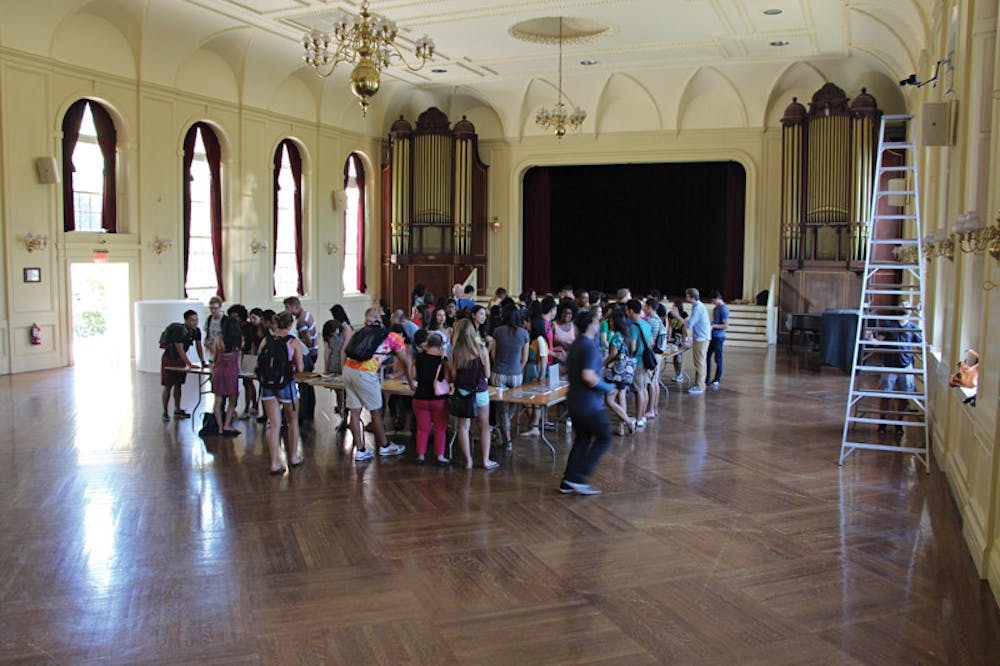National Geographic Channel brought its particular blend of entertainment and science to Alumnae Hall Thursday afternoon, targeting students to serve as participants in a social experiment for its upcoming program, “Crowd Control.”
The show aims to discover innovative fixes for social issues through human experiments — usually involving an unaware crowd — based in behavioral science research, said Zac Nealy, supervising production manager for the production company working with National Geographic on the program.
The episode filmed at Brown explores the issue of foot traffic during emergency situations. Two hundred students at a time were gathered in Alumnae Hall and told to run as fast as they could for the front doors, said participant Maggie Hale ’18. They were subsequently reassembled in the room and given the same instructions to exit as quickly as possible — with the caveat that an obstacle had been placed near the entryway, forcing the pedestrians to go around it to exit the building, Hale said.
The producers of “Crowd Control” approached William Warren, professor of cognitive, linguistic and psychological sciences, with the idea for the experiment after seeing his extensive work on crowd management published online. For 15 years, Warren has tested how individuals react in crowds, developing a lab on campus where a human subject wearing virtual reality goggles walks among virtual people created with stop-motion technology.
“Crowd Control” host Daniel Pink interviewed Warren and tested the virtual lab Wednesday. He returned the next day to conduct the student experiments, which purported to test the “biological phenomena” of swarms, Warren said. The organizers hypothesized that an obstacle would force the crowd into two smaller lines to flow more smoothly out the door, Warren said.
The event was well-attended throughout the afternoon, Nealy said, which some students attributed to the name recognition of the famous science magazine.
“National Geographic is a well-known group,” said volunteer Sierra Clark ’17. “I was drawn to that and (the) idea of being around a camera crew.”
“I love National Geographic and am really into film, so (I) wanted to be part of one of their documentaries,” Hale said.
Others were enticed by the publicity methods employed by showrunners for “Crowd Control”: “I was on Lincoln Field, and one of the National Geographic employees stopped by and said, ‘Go to Alumnae Hall to win a free iPad,’” said Eric Handy ’15.
“Crowd Control” is billed online as a hidden camera show, as experiments are often completed without the subjects’ prior knowledge — a method used to capture “authentic reactions” from participants, Nealy said. But participants at Alumnae Hall volunteered for the experiment only unaware of its specifics before cameras started rolling, Nealy said, adding that he believed this was unlikely to affect the outcome of the experiment.
“I think that the reactions we get from the folks on the program generally come from the surprise that happens when they come across whatever the element that we’re introducing from an experimental standpoint is,” he said.
As predicted, the crowd exited much faster when the object was in place, Hale said.
In general, the show’s innovations have had the expected outcomes, Nealy said. “A lot of the time, in introducing these new variables that account for social issues, we have seen some marked improvement in some of the issues we are trying to solve,” he said.
The episode is likely to air near the end of 2014, Nealy said.

ADVERTISEMENT




